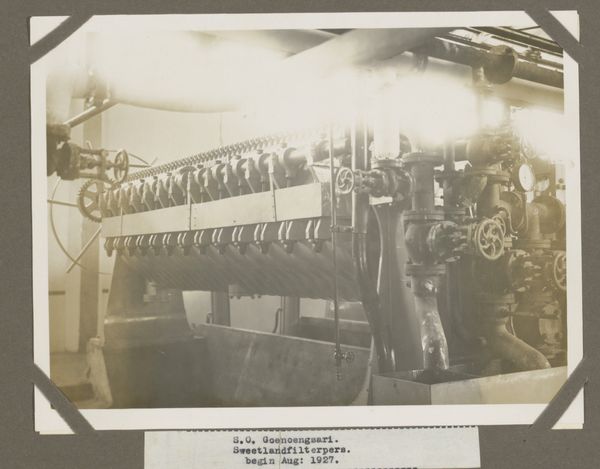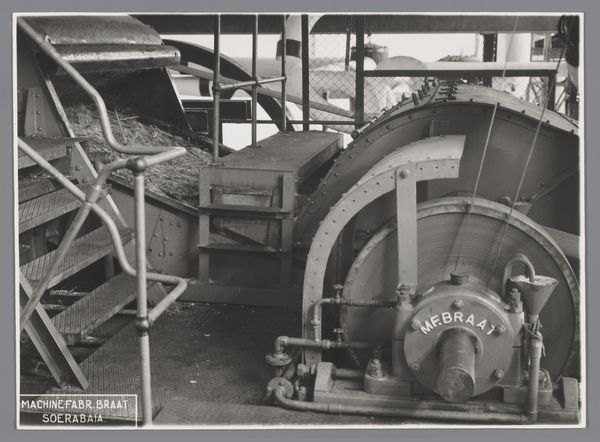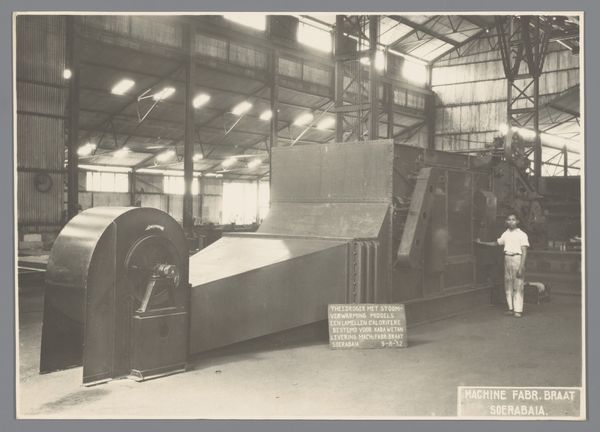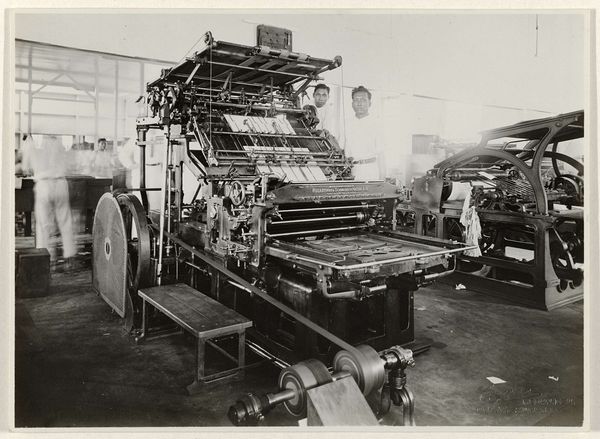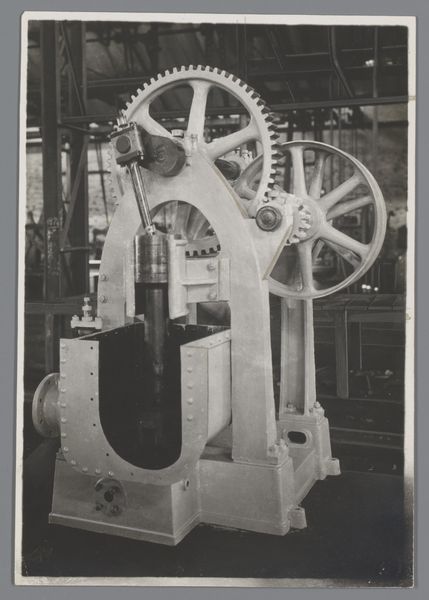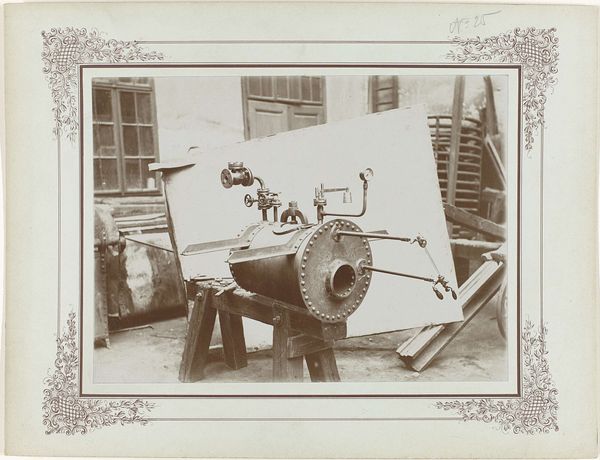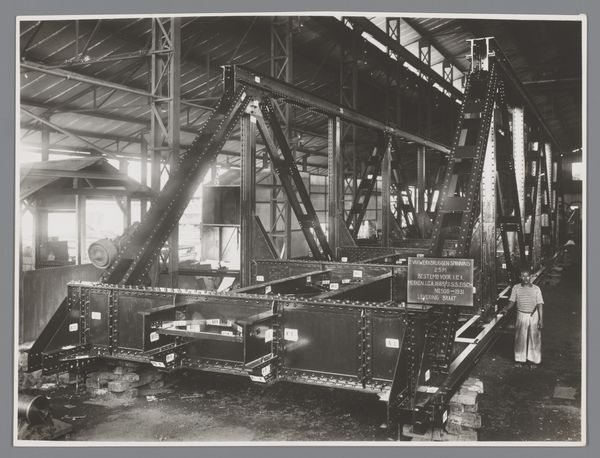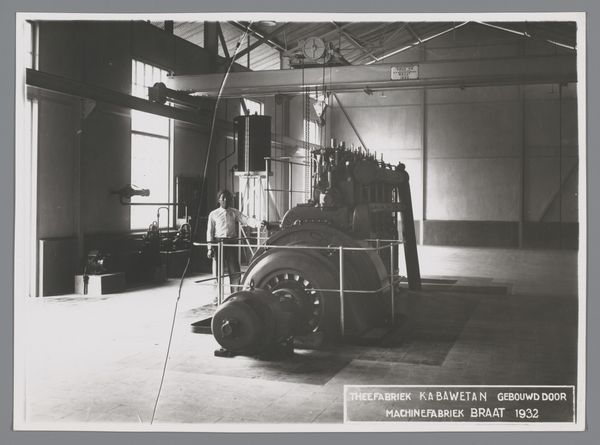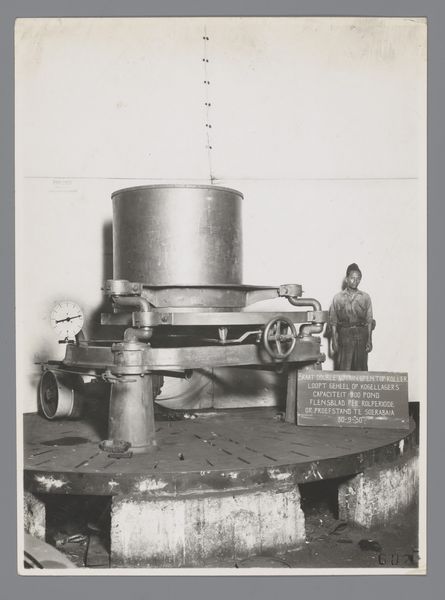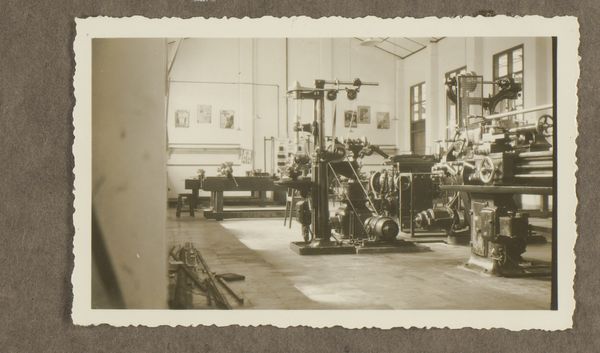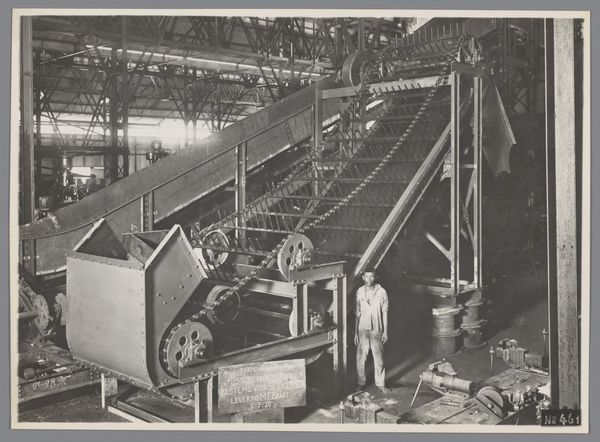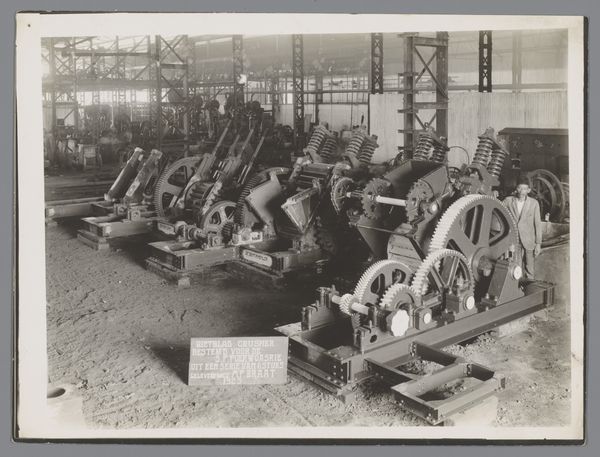
photography, gelatin-silver-print
#
still-life-photography
#
photography
#
historical photography
#
gelatin-silver-print
#
modernism
Dimensions: height 150 mm, width 276 mm
Copyright: Rijks Museum: Open Domain
Curator: This gelatin silver print, entitled "Ampaspers," was created sometime between 1917 and 1938. It’s part of the Rijksmuseum's collection and its creator remains anonymous. Editor: It feels incredibly solid and still. The heavy machinery fills the frame, and yet the figure standing beside it gives it a strange human scale. It's also beautifully textural; the rough brick contrasts the smoothness of the metal. Curator: Absolutely. I find the focus on industrial subject matter so compelling. Consider how photographic processes capture and aestheticize the products of labor here. This print prompts us to consider the intersection of modernism and manufacturing in the early 20th century, and the rise of the machine age that redefined human labor and social relations. Editor: And you see that manifest in the worker leaning casually against it. Was this a commissioned image, a document, or something more self-directed? The social history and access of laborers during this period shape both their depictions, the consumption, and frankly, even access to create imagery like this. Curator: Those questions are exactly what makes this anonymous image so intriguing! The play of light across the metallic surfaces is expertly rendered. Editor: For me it underscores an idea of "useful beauty" the celebration of industrial innovation through photographic arts—challenging traditional art categories of the time. We are encouraged to see value, as well as to engage with images outside the established gallery scene. The social and economic implications for worker images like these deserve additional conversation as well. Curator: Exactly. We see that photography, as a medium, served the purpose of creating propaganda for different social movements that were happening around the turn of the century, giving social weight to the artwork itself. It’s all about context, who and how it was consumed. Editor: I appreciate the attention to material reality, to industry. Curator: And I appreciate that we don't know the artist or full intent of the image itself.
Comments
No comments
Be the first to comment and join the conversation on the ultimate creative platform.
